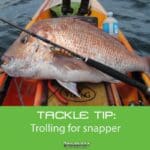Free shipping over $75 (before tax) to the lower 48
Free shipping over $75 (before tax) to the lower 48

Select your boat, and we'll show you products that fit your Make & Model.
Our product is made from at least
75% recycled polyester fibres.
Our product is made from at least
75% recycled polyester fibres.
Our product is made from at least
75% recycled polyester fibres.

Enter your account email address and password and click continue to log in.
All fields are mandatory. Please carefully fill all the fields and click continue to create account.

Please select your local RAILBLAZA website.
You’ve landed on our US site. Please visit our International site to access a wider range of features and products, as well as to find locations that carry RAILBLAZA products near you.
You’ve landed on our US site. Please visit our Canadian site to access products and shipping in Canadian dollars, as well as to find locations that carry RAILBLAZA products near you.
You’ve landed on our US site. Please visit our Australian site to access products and shipping in Australian dollars, as well as to find locations that carry RAILBLAZA products near you.
You’ve landed on our US site. Please visit our UK site to access products and shipping in UK pounds, as well as to find locations that carry RAILBLAZA products near you.
Literally on the doorstep of RAILBLAZA Head office in the North island of NZ is a world renowned snapper fishery. Shallow reefs and fertile waters make the perfect environment for snapper to be in abundance year-round with some record size fish to be found in very shallow reefs.
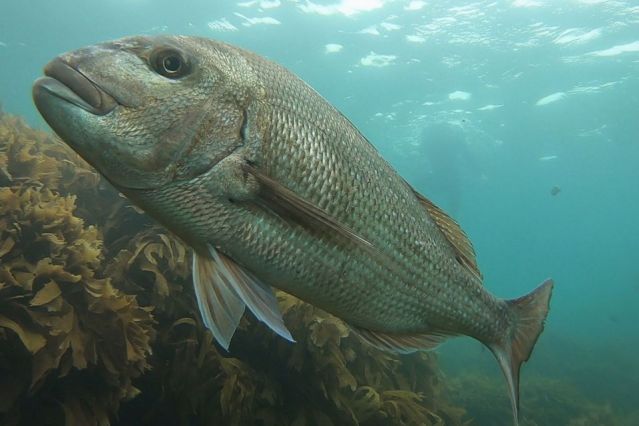
Bait fishing (live or dead) and soft plastics have been successful methods for catching snapper but we have a new method to share with you “Big snapper on slow trolled hard body lures” a relatively new technique to NZ waters which is proving deadly in both shallow and deep water. Pioneering this method is well known kayak angler and RAILBLAZA brand ambassador Stephen Tapp.
This article from Stephen covers tips and techniques from his kayak fishing perspective which can certainly be applied to boat fishing also. Enjoy the read and if you want more fishing tips from the RAILBLAZA team of ambassadors sign up to our newsletter here.
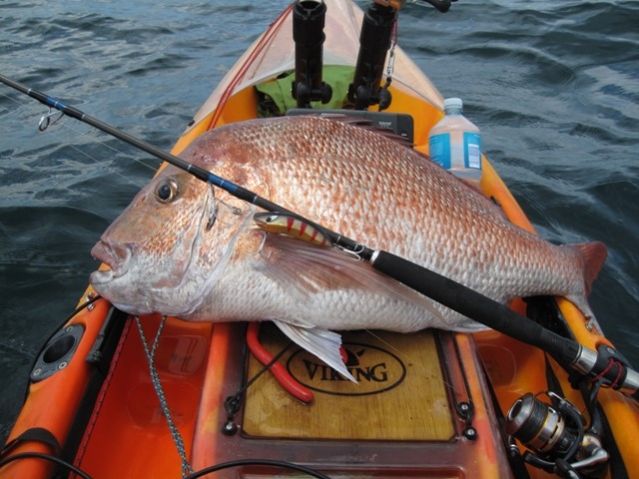
This is still my biggest snapper on a hard body lure, just short of the old 20lb mark it was caught trolling a Dr Evil ultra-deep diver at Whangarei Heads.
Trolling for snapper is a technique that’s finally gaining a bit of traction amongst one or two kayak anglers. There are a handful of guys around Australasia who actively target Pagrus auratus (or Chrysophrys auratus) – it’s the same fish both sides of the Tasman – and the successes are mounting up. I’m also starting to receive plenty of calls and emails from paddlers wanting more hints to give it a go themselves, so here’s a look at the key points I’ve picked up over the last few years of dragging hardware for snapper.
The first point to realize is that snapper are not necessarily as bottom orientated as most anglers believe. As a kayaker I’m no longer surprised at finding them mid water or even closer to the surface. In fact I’ve now had several occasions where I’ve encountered schooling snapper behaving like kahawai or trevally “krilling” on the surface! Whatever they’re chasing they’re always incredibly spooky, and any hint of noise (especially nearby boat traffic) sends them plummeting out of sight, but the fact remains that even in deep water snapper can be found within reach of trolled lures.
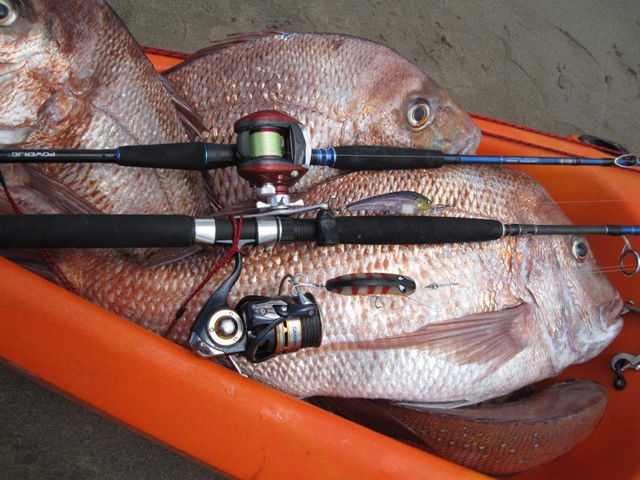
Trolling lures for snapper is enormous fun, and there’s a growing fraternity of kayakers discovering how successful it can be at this time of the year as fish begin to school up
As a free diver exploring reef structure, headlands, and kelp forest with deep water nearby, I regularly encounter snapper within my limited breath-hold capability. In some cases, the surface is only a meter or two above us when the fish gives me a startled glance and thumps that big tail into high gear, departing from an equally startled diver! In these environments snapper will readily come to the surface to chase baitfish, again making them prime targets for trolled lures.
In both these situations stealth is essential to trolling success. Unless the fish are in a frenzy (and even then they still tend to be wary) any excessive noise, shadow, or movement will have snapper off the bite and diving for cover. This is where kayaks have the ultimate advantage over larger craft. There’s no motor noise, minimal hull slap, and a much smaller shadow on the surface. With careful stowing of tackle and accessories it’s also very easy to limit on-board noises that could resonate into the water, though the typical plastic hull is very good at deadening this.
Small boat anglers could also look at “stealthing” their craft to mimic some of the success we kayakers have been experiencing. Paying attention to deadening on-board noises is obviously essential, as is limiting motor noise. Something I’m constantly surprised at is why more don’t look at running electric trolling motors as a means of working structure when soft baiting. An added benefit would also be the ability to quietly slow troll lures and use some of the techniques I’m having brilliant snapper success with.

This little guy is about to go back in the water but shows how aggressive snapper can be: the lure is almost as long the fish!
I’ve divided trolling snapper lures into two depth categories, shallow and deep because I have slightly different techniques for both. The main differences are as a result of how visible and noisy the kayak is in each situation and the need to select appropriate lures.
Shallow water trolling or surface schooling snapper - depths down to around 8-10 meters
Obviously if snapper are close to the surface (because the water is shallow or they’re schooling within view) there is a significant chance that even a stealthy kayak is going to startle and put them down. In these situations I select a lure that will run around a meter above the shallowest water depth I expect to encounter (or will dive to the depth the fish are at if they are near the surface in deeper water). I position the lure at least 40 paddle strokes behind the kayak (I get roughly 1m per paddle stroke and it’s easier to count strokes than look over my shoulder to try and guess how far back the lure is).
My goal with shallow water presentations is to get the lure short-cutting the curved track of the kayak as I navigate is a series of broad turns or lazy “S”s – in other words get the lure “cutting the corner”. Having plenty of line out allows me to take a wide path around headlands and reef structure, and as the lure short-cuts the turn it passes through water that hasn’t been disturbed by my paddling. If I’m working an area of shallow water I weave a path that will keep me away from the most productive looking structure but run the lure straight over the top.
With practice it’s easy to become very accurate with positioning the track of the lure, avoiding areas that might foul it while getting right into undisturbed strike zones. It’s also possible to repeatedly present lures changing to different sizes, colours, shapes, and actions in areas you’re convinced should be holding fish to find the “flavour” of the day.
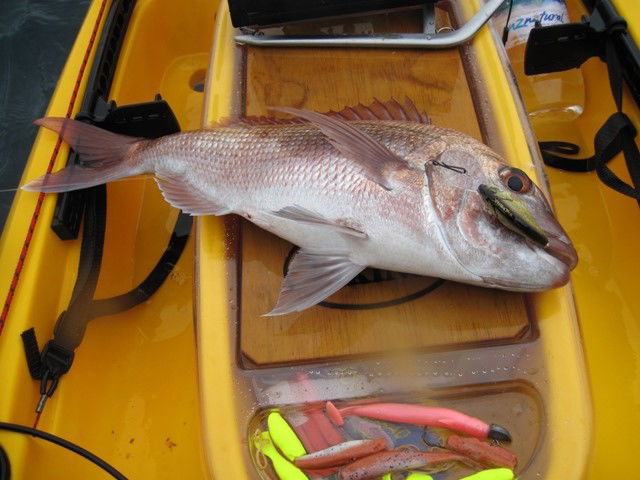
The cost of hard body lures gives many anglers pause to think, but in reality a soft bait session amongst the dreaded leather jackets with will be way more expensive.
An important aspect of this style of trolling is ensuring you’re running heavy enough gear. Having the lure so far behind the kayak means fish often don’t actually have to strip line from the reel to make it to structure. As a general rule I’m using 10-15kg braid with a 4m 20kg leader provided this doesn’t stifle the action of the lure. If the hooks on the lure are up to it (I’m using at least 6x strong VMC’s designed for the tropics) the technique is very much “lock and load” – grab the rod, rudder the kayak around, and don’t give the fish any head start at all! Snapper in this situation will often hit so hard you’ll be convinced it’s a kingfish to start with.
Deep water trolling - depths beyond 12 meters
Here there isn’t quite the need for finesse in keeping absolutely quiet and presenting the lure (though you won’t get away with being noisy and careless). The main goal is to get the lure as deep as possible with the right kind of action to get the fish interested. This is where I’ve been running ultra-deep diving bibbed lures designed for fresh water species like Aussie barra and cod. These broad bibbed lures will dive to beyond 8-10m and are designed to run at slower speeds than those made for salt water applications. This makes them much better suited to kayak trolling speeds.
Another feature of many of these lures is their slower vibrating action; over the last couple of years trolling from kayaks I’ve found the stronger slower pulses generated by this style of lure will attract snapper from further away (boaties often troll faster and may have different experiences). It’s been very educational to mark fish off to one side of the kayak using side imaging sonar and see how close I have to get to induce a strike.

Snapper have no qualms about inhaling hard body lures, this fish rose 10 meters off the bottom to absolutely smash this StrikePro “Small Supersonic”.
Another surprise for me has been how far snapper will rise to take a lure passing overhead. Returning from our trip to the Three Kings in July we stopped and fished inside North Cape. In 20-25m of water I had snapper near the bottom pouncing all over lures that were running between 6-10m. That means the snapper were often rising through more than 10-12m to hit the lures like freight trains!
Tackle-wise, the main difference to fishing shallower water is the reduced need to avoid structure. This allows the benefit of using much lighter and thinner main lines, reducing water resistance so lures will troll as deep as possible. For this reason I also tend to reduce the leader weight from 20kg to 15kg. I also attach my lures using a genie clip to make it easy swap between colours and styles, or swap out a lure that’s had its hooks mauled by a big moocher!
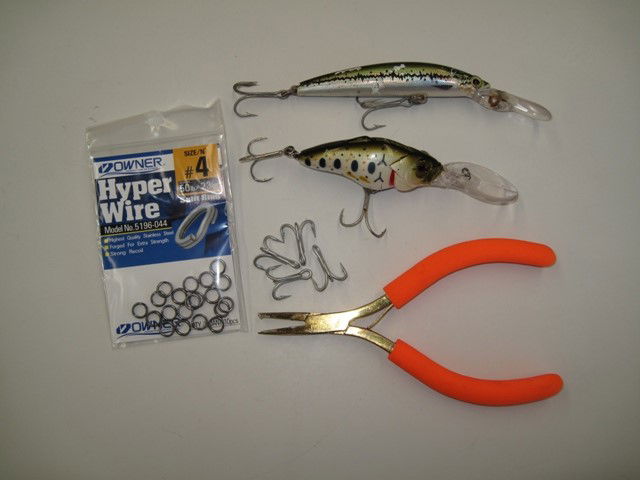
Battle scarred and wounded, hook replacement is a fact of life when targeting snapper. The strength in their jaws is able to mangle most hooks by working one against the other, but aside from honorable scratches the lures typically survive well.

RAILBLAZA brand ambassador Jason aka Paddle Guy – captures the action on the RAILBLAZA Camera Booms showing just how effective this method is for catching snapper. Using the Rod Holder II mounted in front of the kayak for ease of access and greater ability to see the strike and set the hooks!
Remember if you want more fishing tips from the RAILBLAZA team of ambassadors sign up to our newsletter here.





